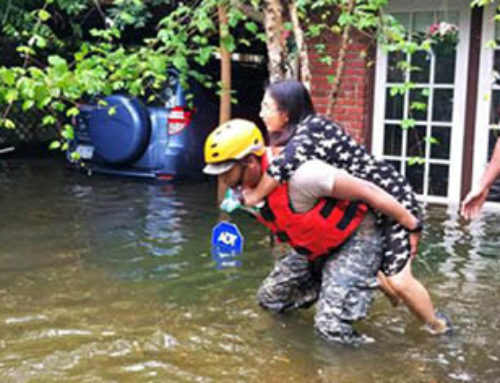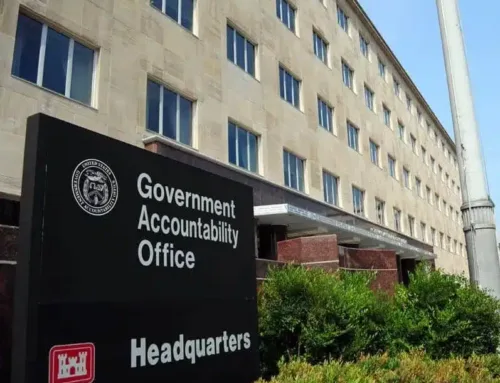Prepared Testimony of Steve Ellis, president, Taxpayers for Common Sense submitted to the Committee on Financial Services, Subcommittee on House, Community Development and Insurance hearing “Built to Last: Examining Housing Resilience in the Face of Climate Change.”
Watch below, download here, or scroll further down to read the full testimony as a PDF or in plain text.
Testimony of Steve Ellis
President, Taxpayers for Common Sense
U.S. House of Representatives
Committee on Financial Services
Subcommittee on House, Community Development and Insurance hearing
“Built to Last: Examining Housing Resilience in the Face of Climate Change”
May 4, 2021
Good morning, Chairman Cleaver, Ranking Member Stivers, members of the subcommittee. I am Steve Ellis, President of Taxpayers for Common Sense (TCS), a national non-partisan budget watchdog. Thank you for inviting me to testify at this hearing on housing resilience in the face of climate change and legislative proposals regarding the National Flood Insurance Program (NFIP) and the Community Development Block Grant – Disaster Recovery (CDBG-DR) program. TCS has worked on disaster related issues on behalf of taxpayers for our entire twenty-six years of existence and I’ve been involved in flood issues dating back to my days as a young Coast Guard officer dealing with the aftermath of the Great Midwest Flood of 1993. These are critical issues for taxpayers and the country needs smart public policy that protects people and property.
The timing of this hearing is notable considering the first named storm of the extremely active 2020 Atlantic hurricane season appeared on May 16th. The year included a total of 30 named storms, a record. This was on the heels of years of increasing billion-dollar disasters. The Congressional Budget Office estimates that hurricane winds and storm-related funding cost the U.S. economy $54 billion annually including $34 billion in expected annual economic losses to the residential sector. The expected annual cost to federal taxpayers is estimated to be $17 billion.[1]
Like my fellow witness, the Natural Resources Defense Council, Taxpayers for Common Sense is allied with SmarterSafer, a coalition in favor of promoting public safety through fiscally sound, environmentally responsible approaches to natural catastrophe policy. The groups involved represent a broad set of interests, from free market and taxpayer groups, to consumer and housing advocates, to environmental and insurance industry groups.
For more than a decade the coalition has advocated reforms to federal disaster policy and in the National Flood Insurance Program that ensure the program is smarter and safer for those in harm’s way, the environment, and for federal taxpayers.
Climate Change
I would like to first turn to climate change. From agriculture to defense to transportation, climate change impacts our entire federal budget, but no area of federal spending so directly mirrors the escalating climate change crisis as disaster spending. On a cost-adjusted basis, billion-dollar disasters in the U.S. have increased from 2.9 per year at an average cost of $17.8 billion in the 1980s to 16.2 disasters per year at an average annual cost of $121.4 billion from 2016-2020.[2] The Congressional Budget Office puts it rather succinctly, “Climate change increases federal budget deficits.” And that, “Investment by the government or others in various types of mitigation or adaptation efforts could reduce the costs of climate change.”[3]
Federal floodplain policy and management has enabled unwise development that ironically contributes to catastrophic events. For instance, the flood insurance program subsidizes construction in risk- and disaster-prone areas, making it economically “safe” to build in medium-and high-risk areas by removing the costs of such decision-making. Before Hurricane Katrina in 2005, the federal flood insurance program never borrowed more than $1.5 billion from the U.S. Treasury and loans were repaid with interest. Since the 2005 storms, the program has borrowed more than $35 billion.
One other truism of disasters is that they have a disproportionate impact on poor and minority populations. In many cases these individuals don’t have savings to rely on while they rebuild, they may have lost their transportation to work, and their place of business may have been destroyed as well. Because of historically discriminatory policies or a need for lower housing costs, these individuals are often situated in less desirable, more vulnerable, higher risk areas. They may not be able to repay loans made available after disasters or provide sufficient funds of their own to tap federal programs.
As I will discuss, we have long called for means-tested premium assistance to help more homeowners obtain flood insurance. There are a little more than 5 million NFIP policies, but there are well over 100 million housing units. To put the need for flood insurance into perspective, according to FEMA, after 2016’s extraordinary heavy rainfall event in Baton Rouge, the average homeowner with flood insurance coverage got $86,500 to rebuild their home, the average person without flood insurance got only $9,100 in individual disaster assistance.[4]
In addition, programs such as CDBG-DR should take into account the needs of disadvantaged populations and ensure that they have access to the benefits, but also to tools to mitigate, adapt, and pre-spond to future disaster events to make them less costly. While it varies by situation and peril, we know that every dollar spent on mitigation can save as much as $6 or more in post-disaster response.[5]
To be sure, the challenges both the NFIP and CDBG-DR attempt to address would still exist absent climate change. There would still be disasters – a member of the De Soto expedition documented a great flood of the Mississippi River in the mid-16th century for instance. But clearly climate change exacerbates those challenges.
For 50 years, the flood insurance program has helped fuel a development boom in high-risk areas simply by making it more affordable to take on flood risk. And housing doesn’t occur in a vacuum. As areas develop infrastructure follows with roads, bridges, water, electric, and sewer; these all intensify along with residential development. The NFIP has exacerbated exposure to climate change. At the same time it is negatively impacted by it. As storms increase in frequency, as sea levels rise, this increases the costs to the program. It also increases demand for CDBG-DR.
The Committee provided discussion drafts of long-term reauthorization of NFIP as well as authorization legislation for CDBG-DR. I would like to comment on those two programs and the draft legislation.
NFIP
It is important to understand the context of how the nation got into the flood insurance business. After years of ad hoc disaster aid being meted out by Congress, the NFIP was established in 1968 to create “a reasonable method of sharing the risk of flood losses through a program of flood insurance which can complement and encourage preventative and protective measures.”[6] The program was to make up for a perceived lack of available flood insurance. But even at that time Congress was warned that it was playing with fire. The Presidential Task Force on Federal Flood Control Policy wrote in 1966:
A flood insurance program is a tool that should be used expertly or not at all. Correctly applied it could promote wise use of flood plains. Incorrectly applied, it could exacerbate the whole problem of flood losses. For the Federal Government to subsidize low premium disaster insurance or provide insurance in which premiums are not proportionate to risk would be to invite economic waste of great magnitude.[7]
In a little over 15 years, NFIP has been forced to borrow nearly $40 billion from taxpayers to pay off claims, so I think it’s pretty clear that this “tool” was not used expertly and that the waste issue has come to fruition.
NFIP has subsidized rates in the program virtually since its inception, regardless of need. FEMA estimates more than 25 percent of properties in the program pay subsidized or “grandfathered” rates, where the flood zone designation has changed.[8] Even with the properties that are paying supposedly risk-based premiums, the fact that the program can borrow from the Treasury is a built-in subsidy. The Government Accountability Office (GAO) has documented large cross-subsidies, many of which benefit high-income homeowners.[9] They found that over 78 percent of subsidized properties in NFIP are located in counties with the highest home values (the top three deciles), while only five percent of subsidized properties are in counties with the lowest home values (the bottom five deciles).[10] This represents a real challenge to the program’s sustainability.
The best way to reduce the rate – for property owners and taxpayers – is to reduce the risk. It’s not about artificial rate caps that hide the real risk to people, but about finding ways to fund mitigation either at the property level or at the community level. If a property owner is unable to afford the premium, means-tested assistance outside the rate structure should be provided.
The discussion draft of the NFIP reauthorization legislation authorizes the program for another five years, getting past the annual or even monthly fights. Unfortunately, it misses on many other marks. The demonstration program on affordability is a good start, although the mandated report on implementation should be submitted earlier than in five years so it can inform subsequent reauthorization.
But on the flip side, the proposed repeal of the surcharge imposed by Grimm-Waters – a surcharge that was implemented to pay for the repeal of elements of Biggert-Waters – will create more costs for taxpayers. Halving of the cap on premium increases intended to bring some policyholders rates closer in line to their risk is also a step backward. It would go from 18 percent to 9 percent. Redefining average historical loss year so that it excludes catastrophic loss years will misrepresent the true costs of the program. The average historical loss year is used to set premiums in an effort to try to ensure they help offset costs to taxpayers. Not including catastrophic loss years doesn’t mean they didn’t happen and that they didn’t cost taxpayers. The legislation also waves the magic debt-cancellation wand without even reducing the $30 billion borrowing limit – a ridiculously high amount.
The legislation also includes provisions for modernizing mapping and several mitigation measures TCS would support.
As the committee knows, FEMA has launched a new effort to better price actual risk for properties. The new program, Risk Rating 2.0, is supposed to start for new properties and policies in October and for existing policyholders next year. According to FEMA, they worked with public, private, and nonprofit organizations to incorporate more data and flood variables to determine actual risk to properties, and it will be updated annually. In theory, this will reduce some of the cross-subsidies that have plagued the program. In addition, FEMA predicts that 23 percent of policyholders will see an average decrease of $86 a month and 66 percent will see an increase of less than ten dollars and another seven percent an increase of less than $20 per month. Four percent will see an increase of more than $20 per month, but those are for high value homes in high-risk areas. This adheres to the existing rate caps.[11]
CDBG-DR
CDBG-DR was first created in 1992 after Hurricanes Andrew, Iniki, and Omar to supplement existing disaster-related authorities to help communities rebuild after major disasters. Specifically, these funds are for long-term recovery, including restoration of infrastructure and housing and economic revitalization, but also future disaster mitigation activities. Since it was first created, nearly $90 billion has been appropriated to the program.[12]
While there is some program direction, in reality there is a great deal of leeway granted to the Housing and Urban Development (HUD) Secretary and the implementing states and communities. Flexibility is an important element of the program, but stability and predictability are also critical to successfully meeting program goals. The program lacks its own statutory authorization. Congress turns to CDBG-DR after major disasters, appropriating funds and directing HUD to implement. In turn, HUD governs the program through Federal Register notices. As you might imagine, the CDBG-DR implemented by the George W. Bush Administration HUD after Hurricane Katrina is different than the one implemented by the Obama Administration HUD after Superstorm Sandy, which is different than the one implemented by the Trump Administration HUD after Hurricane Harvey. This lack of continuity delays implementation and, ultimately, delivery of critical funds. Furthermore, the lack of organic authorization for this program stymies effective accountability and oversight.
For instance, after Superstorm Sandy the then-winding down Recovery Act Transparency (RAT) Board was tasked with tracking Sandy-related spending. In conversations with the RAT board, TCS found that their ability to track spending was severely hampered by funding not tagged as Sandy spending. Now, this issue was beyond the CDBG-DR program, but roughly $16 billion of the appropriated funds were for CDBG-DR, by far the largest chunk of the disaster supplemental. Accountability and transparency are key to program credibility with taxpayers as well as critical for program adjustment and adaptability to future disasters.
TCS appreciates the committee’s efforts to statutorily authorize the CDBG-DR program and is supportive of these efforts. After any major disaster there is a balancing act between quick response and appropriate allocation of funds. Too often, haste makes waste. FEMA’s Disaster Relief Fund is there for initial response. There are also Small Business Administration low interest disaster loans as well as funding often provided to appropriate agencies such as the U.S. Army Corps of Engineers and the Forest Service. CDBG-DR is about the long game and rebuilding communities in ways that make people less vulnerable to future disasters. Each disaster is an opportunity – a tragic opportunity, but an opportunity nonetheless – to make communities more resilient and to pre-spond to future disasters.
That said, the timeline in the discussion draft is quite extended. HUD is given 60 days to allocate the funds to various grantees who have 90 days to come up with a plan to use those funds. HUD is then given 60 days to approve or disapprove the plans and, if disapproved, an additional 15 days to provide their reasoning for disapproval and ways to amend the plan to obtain approval. That kicks off a 45 day period where the grantee can revise the plan. That is a total of 270 days. We would urge the committee to find ways to trim that timeline. For instance, it doesn’t make sense that after spending 60 days determining to disapprove a plan that it would take an additional 15 days to tell the potential grantee why. The pre-certification process in the legislation makes sense and would significantly reduce the timeline and provides an incentive for states and communities to plan for inevitable disasters.
We would also urge that rather than one large disbursement to a grantee that funds be meted out over time as benchmarks are met. This will serve to provide incentives to proceed and also allow course corrections over time. TCS also supports the Inspector General oversight measures and the requirement that information about use of CDBG-DR funding be provided to the public on a monthly basis. Further, the best practices report required by the legislation makes sense, but it should be something that is periodically revisited and updated. Lastly, we are concerned that the timeline before clawing back unused funds is too generous, as much as 10 years for regular projects and more than 12 years for mitigation.
Conclusion
I want to thank you for inviting me to testify today. Climate change, its impacts, NFIP, and CDBG-DR are critical issues not just for their budget and taxpayer impacts, but for society as a whole. Federal policies must better promote realistic and responsible solutions to climate change including targeted investments that lift innovative solutions and reflect the needs and experiences of low-income and minority communities. The goal must be to develop risk management and mitigation strategies that enable communities, infrastructure, and industries to become more resilient, face less risk, and can better adapt to and mitigate future costs and damages of climate change.
To that end, I urge the House Financial Services Committee to pursue solutions to these issues in a bipartisan manner as has been done in the recent past. In countless areas across government, this has proved to be the only method to achieve durable and lasting solutions to our challenges. Thank you again, and I’m happy to answer any questions you might have.
Footnotes:
[1] Congressional Budget Office. “Expected Costs of Damage From Hurricane Winds and Storm-Related Flooding.” April 2019. https://www.cbo.gov/system/files/2019-04/55019-ExpectedCostsFromWindStorm.pdf
[2] National Oceanic and Atmospheric Administration National Centers for Environmental Information. “U.S. Billion-Dollar Weather and Climate Disasters (2021).” https://www.ncdc.noaa.gov/billions/
[3] Congressional Budget Office. “Budgetary Effects of Climate Change and of Potential Legislative Responses to It.” April 27, 2021. https://www.cbo.gov/publication/57019
[4] Taxpayers for Common Sense. “Weekly Wastebasket: Another Hurricane Season Begins.” June 1, 2018. https://www.taxpayer.net/infrastructure/another-hurricane-season-begins/
[5] National Institute for Building Sciences. “Mitigation Saves: Mitigation Saves Up to $13 for Every $1 Invested.”2021.nibs.org/files/pdfs/ms_v4_overview.pdf
[6] P.L. 90-448
[7] U.S. Task Force on Federal Flood Control Policy. “A Unified National Program for Managing Flood Losses.” August 1966. P 17. http://www.loc.gov/law/find/hearings/floods/floods89-465.pdf
[8] Congressional Research Service. “National Flood Insurance Program: The Current Rating Structure and Risk Rating 2.0.” January 25, 2021. https://fas.org/sgp/crs/homesec/R45999.pdf
[9] Government Accountability Office. “Flood Insurance: More Information Needed on Subsidized Policies.” July 2013.
[10] U.S. Government Accountability Office. July 2013. Flood Insurance: More Information Needed on Subsidized Properties. (Publication No. GAO-13-607). Retrieved from: http://www.gao.gov/assets/660/655734.pdf
[11] Federal Emergency Management Agency. “Risk Rating 2.0 is Equity in Action.” https://www.fema.gov/sites/default/files/documents/fema_rr-2.0-equity-action_0.pdf
[12] U.S. Department of Housing and Urban Development. “CDBG Disaster Recovery Grant History 1992-2021.” https://files.hudexchange.info/resources/documents/CDBG-DR-Grant-History-Report.pdf










Get Social